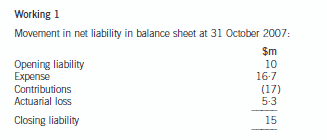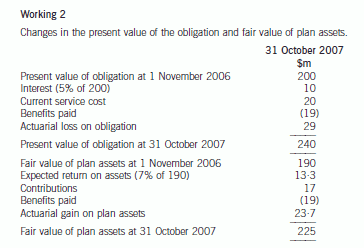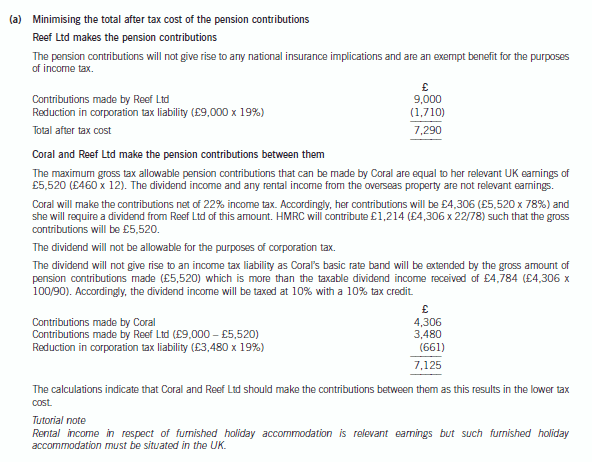福建省考生想知道ACCA的科目F2怎么备考?
发布时间:2020-01-10
学习ACCA,不仅是为了给自己的简历上增添一个拿的出手的证书,更是因为ACCA完整的知识体系,充实自己的大学生活。我认为,每一份努力都会有回报,只要功夫下的多,就没有什么事情做不好。这一份ACCA MA(F2)的备考技巧请大家收藏起来哦~
报考建议
F2的考试一般建议大家在结课之后一个月左右考试,因为F2是一门刷题型的科目,需要留出足够的做题,并且考前也需要模拟考进行练习;但也不宜太晚考,有些需要记忆的知识点容易遗忘。因此,F2最简单也是最直截了当的复习技巧就是题海战术,当然大家可以根据自己的实际情况进行调整,如果备考时间充裕,也可以缩短备考时间,如果碰上了学校的考试周,或者有自己的比较忙的事情,也可以适当拉长。
备考建议
① 备考初期:F2主要以刷题为主。F2是管理会计,偏计算,但是计算水平要求其实也很低,重要的是细心点,把题看懂。
在ACCA的官网中也有样卷与模考卷可以练习,其中样卷是可以免费进入,进行练习的,模考卷的练习是需要付7英镑的费用。:
② 临考准备:如果大家已经看完网课,也做了一定量的习题了后,这个时候应该要明确自己薄弱的地方在哪里。哪部分知识点比较薄弱,就花费多一点的时间去复习,反之就少花费一点时间。建议大家可以像考试一样,在电脑上认真地花两个小时做一套模拟卷,并且进行批改,看看自己在考试中会遇到什么问题。
如果觉得两个小时的时间不够,做不完,说明做题的速度不够,需要提高做题速度。那么再做一遍题库,或者找其他的练习册再进行题海战略是必要的。
如果发现某个知识点的题目都需要花特别多的时间,或错误率非常高,那么说明对这部分的知识掌握的并不是很好,需要再次反复去巩固这部分的知识点,这部分有关的网课以及习题是需要再重新回顾1-2遍的。
如果觉得用电脑看题自己非常不适应,会非常影响自己的思路和速度,那么平时就不要在纸质的练习册上做题了,应该多练练,比如可以在电脑上做电子版的练习册或题库,使自己更适应机考。
总之大家可以通过模拟考的形式明确自己的弱点,进行加强后再在考试前练习一次,这样考试前就不会太紧张。但考试紧张也是会在所难的,所以就要要求大家及时调整心态,快速找回考试状态。
F2知识点总结
1. Data
and information:
Unprocessed
--->data; Processed --->information
2.
Quality of good information
“ACCURATE”
3.
Mission statement(abstract) ---> Objective(SMART) --->Strategy(Possible
course of action)
4.
Planning (establishing the objectives& selecting appropriate strategies)
5.
Control(compare plans with actual results, reviewed and made changes)
6. The
relationship between planning, decision making and control
7.
Management information Strategic information
幻想一步成功者突遭失败,会觉得浪费了时间,付出了精力,却认为没有任何收获;在失败面前,懦弱者痛苦迷茫,彷徨畏缩;而强者却坚持不懈,紧追不舍。各位ACCAer们加油,期待听到你们3月份考试成功的好消息~
下面小编为大家准备了 ACCA考试 的相关考题,供大家学习参考。
(d) Estimate by how much the bid might be increased without the shareholders of Paxis suffering a fall in their expected wealth, and discuss whether or not the directors of Paxis should proceed with the bid. (5 marks)
(d) The current bid values the shares of Wragger at £19·07 million, compared to the current market value of £15·36 million, a premium of £3·71 million. The expected synergy is £15,570,000. If these data are accurate the bid could be substantially increased without the shareholders of Paxis suffering a fall in their expected wealth. In theory, the bid could be increased by an additional £11,860,000, or 148 pence for each existing Wragger share.
There might also be strategic reasons for undertaking the bid, and the acquisition of Wragger might lead to future options that are not valued by the above analysis.
The proposed acquisition is expected to result in substantial synergy, and to create wealth for the shareholders of both companies. The directors are recommended to proceed with the bid.
(b) (i) Discusses the principles involved in accounting for claims made under the above warranty provision.
(6 marks)
(ii) Shows the accounting treatment for the above warranty provision under IAS37 ‘Provisions, Contingent
Liabilities and Contingent Assets’ for the year ended 31 October 2007. (3 marks)
Appropriateness of the format and presentation of the report and communication of advice. (2 marks)
(b) Provisions – IAS37
An entity must recognise a provision under IAS37 if, and only if:
(a) a present obligation (legal or constructive) has arisen as a result of a past event (the obligating event)
(b) it is probable (‘more likely than not’), that an outflow of resources embodying economic benefits will be required to settle
the obligation
(c) the amount can be estimated reliably
An obligating event is an event that creates a legal or constructive obligation and, therefore, results in an enterprise having
no realistic alternative but to settle the obligation. A constructive obligation arises if past practice creates a valid expectation
on the part of a third party. If it is more likely than not that no present obligation exists, the enterprise should disclose a
contingent liability, unless the possibility of an outflow of resources is remote.
The amount recognised as a provision should be the best estimate of the expenditure required to settle the present obligation
at the balance sheet date, that is, the amount that an enterprise would rationally pay to settle the obligation at the balance
sheet date or to transfer it to a third party. This means provisions for large populations of events such as warranties, are
measured at a probability weighted expected value. In reaching its best estimate, the entity should take into account the risks
and uncertainties that surround the underlying events.
Expected cash outflows should be discounted to their present values, where the effect of the time value of money is material
using a risk adjusted rate (it should not reflect risks for which future cash flows have been adjusted). If some or all of the
expenditure required to settle a provision is expected to be reimbursed by another party, the reimbursement should be
recognised as a separate asset when, and only when, it is virtually certain that reimbursement will be received if the entity
settles the obligation. The amount recognised should not exceed the amount of the provision. In measuring a provision future
events should be considered. The provision for the warranty claim will be determined by using the expected value method.
The past event which causes the obligation is the initial sale of the product with the warranty given at that time. It would be
appropriate for the company to make a provision for the Year 1 warranty of $280,000 and Year 2 warranty of $350,000,
which represents the best estimate of the obligation (see Appendix 2). Only if the insurance company have validated the
counter claim will Macaljoy be able to recognise the asset and income. Recovery has to be virtually certain. If it is virtually
certain, then Macaljoy may be able to recognise the asset. Generally contingent assets are never recognised, but disclosed
where an inflow of economic benefits is probable.
The company could discount the provision if it was considered that the time value of money was material. The majority of
provisions will reverse in the short term (within two years) and, therefore, the effects of discounting are likely to be immaterial.
In this case, using the risk adjusted rate (IAS37), the provision would be reduced to $269,000 in Year 1 and $323,000 in
Year 2. The company will have to determine whether this is material.
Appendix 1
The accounting for the defined benefit plan is as follows:



(c) Pinzon, a limited liability company and audit client, is threatening to sue your firm in respect of audit fees charged
for the year ended 31 December 2004. Pinzon is alleging that Bartolome billed the full rate on air fares for audit
staff when substantial discounts had been obtained by Bartolome. (4 marks)
Required:
Comment on the ethical and other professional issues raised by each of the above matters and their implications,
if any, for the continuation of each assignment.
NOTE: The mark allocation is shown against each of the three issues.
(c) Threatened legal action
Ethical and professional issues
■ An advocacy threat has arisen as Bartolome and Pinzon are in opposition concerning the fee note for the 2004 audit.
■ If Pinzon’s allegations are true this may cast serious doubt on the integrity of Bartolome. Pinzon should be advised to
take their claims first to ACCA’s Disciplinary Committee.
■ If Bartolome has indeed charged full air fares when substantial discounts had been obtained this could be due to:
– Bartolome incorrectly believing this to be an acceptable industry practice; or
– a billing error/oversight.
In either case Bartolome should issue a credit note, although this may be insufficient to make amends and salvage the
auditor-client relationship.
■ Bartolome may have legitimately claimed for full airfares if this was agreed in its contract (i.e. the terms of engagement)
with Pinzon.
Implications for continuation with assignment
Unless the threat of legal action is amicably resolved very quickly (which is perhaps unlikely) Pinzon and Bartolome are in
conflict. Bartolome cannot therefore be seen to be independent and so should tender their resignation as auditor for the year
ending 31 December 2005 (assuming they were re-appointed and have not already been removed from office).
4 Coral is the owner and managing director of Reef Ltd. She is considering the manner in which she will make her first
pension contributions. In November 2007 she inherited her mother’s house in the country of Kalania.
The following information has been extracted from client files and from telephone conversations with Coral.
Coral:
– 1972 – Born in the country of Kalania. Her father, who died in 2002, was domiciled in Kalania.
– 1999 – Moved to the UK and has lived and worked here since then.
– 2001 – Subscribed for 100% of the ordinary share capital of Reef Ltd.
– Intends to sell Reef Ltd and return to live in the country of Kalania in 2012.
– No income apart from that received from Reef Ltd.
Reef Ltd:
– A UK resident company with annual profits chargeable to corporation tax of approximately £70,000.
– Four employees including Coral.
– Provides scuba diving lessons to members of the public.
Payments from Reef Ltd to Coral in 2007/08:
– Director’s fees of £460 per month.
– Dividends paid of £14,250 in June 2007 and £14,250 in September 2007.
Pension contributions:
– Coral has not so far made any pension contributions in the tax year 2007/08 but wishes to make gross pension
contributions of £9,000.
– The contributions are to be made by Reef Ltd or Coral or a combination of the two in such a way as to minimise
the total after tax cost.
– Any contributions made by Coral will be funded by an additional dividend from Reef Ltd.
House in the country of Kalania:
– Beachfront property with potential rental income of £550 per month after deduction of allowable expenditure.
– Coral will use it for holidays for two months each year.
The tax system in the country of Kalania:
– No capital gains tax or inheritance tax.
– Income tax at 8% on income arising in the country of Kalania.
– No double tax treaty with the UK.
Required:
(a) With the objective of minimising the total after tax cost, advise Coral as to whether the gross pension
contributions of £9,000 should be made:
– wholly by Reef Ltd; or
– by Coral to the extent that they are tax allowable with the balance made by Reef Ltd.
Your answer should include supporting calculations where necessary. (9 marks)

声明:本文内容由互联网用户自发贡献自行上传,本网站不拥有所有权,未作人工编辑处理,也不承担相关法律责任。如果您发现有涉嫌版权的内容,欢迎发送邮件至:contact@51tk.com 进行举报,并提供相关证据,工作人员会在5个工作日内联系你,一经查实,本站将立刻删除涉嫌侵权内容。
- 2020-01-09
- 2020-01-09
- 2020-01-29
- 2020-01-09
- 2020-04-15
- 2020-04-25
- 2020-01-10
- 2020-05-15
- 2020-01-09
- 2020-01-09
- 2020-01-10
- 2020-05-09
- 2020-04-21
- 2020-01-10
- 2020-05-15
- 2020-01-10
- 2020-04-23
- 2020-05-05
- 2020-05-14
- 2020-01-10
- 2020-05-02
- 2020-01-10
- 2020-01-10
- 2020-01-09
- 2020-05-06
- 2020-03-08
- 2020-01-09
- 2020-05-20
- 2020-04-24
- 2020-01-10